Gyrfalcon: The Bird of Kings
By: Mike Jerrard
It is the middle of summer yet still my face and hands quickly numb in the biting wind as I attempt to fill our rental car with petrol. We had arrived a few hours earlier in Iceland by way of Ecuador where we had just followed in Darwin’s footsteps exploring the Galapagos Islands. We were going from one extreme to another as we now found ourselves far from the equator and on the other side of the Atlantic. We had managed to catch a bit of sleep literally in a pod the size of a closet during our stopover in Amsterdam Airport.
It was pushing midnight but the eternal summer sunshine meant one could still see the beautiful Icelandic countryside as we made our way to Reykjavík. In the morning we would take off on our own “Golden Circle” tour of Iceland, opting not to follow in the footsteps of the many other tourists that are increasingly flocking to this beautiful land. Our itinerary would take our rented Suburu Outback around the entire country as we followed the coastline to take in as much as two weeks would allow us. Highlights we were hoping to experience were of course the glaciers, puffins, waterfalls, and untouched landscapes. For me personally though it was the Symbol of Iceland which I hoped to get a glimpse of, the regal Gyrfalcon.

It is no wonder that this stunning bird of prey had caught my attention as it has done so for centuries as kings and sheiks have sought it out for a symbol of status and falconry. The Peregrine Falcon may have more notoriety worldwide and hold the title for the fastest animal, but the Gyrfalcon seems to have been blessed with all the greatest advancements evolution could throw at it to become a true master of the skies. Its size makes it the largest of the falcons and its endurance is almost unbelievable at times. It is no wonder the Vikings held it with such regard and why even today native Icelanders are extremely protective of it. They will not hesitate to call the authorities should a tourist or anyone approach to close to nesting sites or eyries. It hasn’t always been this way though. As recently as 1885 the Iceland parliament declared the Gyrfalcon could be destroyed as it may have been thought to be in competition with hunters for game birds. It would not be until the 1930s where they would finally get protection.
Even Audubon was in awe of this bird and stayed up through a stormy night to capture with his paint its beauty the best he could after his son had shot a breeding pair just hours before. Sadly it was at a time where the best way to document the natural world was by way of collection. Audubon recalled his Gyrfalcon painting to be one of his greatest tasks as he sat drenched from rain with his canvas too not escaping the rain the managed to leak from his dwelling.
My best chance of getting a glimpse of this king of the skies would be around Lake Mývatn where prey is bountiful for the hunter. We spent all day circling the lake and although we would capture beautiful Goldeneyes and Harlequin Ducks, the fálki as the Icelanders call it would elude us. My hopes in seeing this bird were dwindling but I at least looked forward to the puffin nesting colony as we made our way towards Borgarfjörður Eystri in Iceland’s Northeast Corner. It would definitely not disappoint as we captured more puffin photos than one could ever dream of including the iconic shot of a beak full of sardines. Only on Mykines in the Faroe Islands have I ever witnessed so many puffins before.

It is interesting that although highly prized by Vikings and Icelanders, the Gyrfalcon has never really been used by them for falconry as the sport never really took off on Iceland. The bird was however used was part of the medieval Icelandic economy where they would put the birds in the hands of kings. Even today middle East Oil Sheiks seek them out although their use in falconry has lost a lot of popularity with the advent of firearms. Those who do still own them keep them hidden as they are highly valuable and even place radio tracking devices on them to aid with recovery.
As we leave the puffins behind, we head south towards the largest of Iceland’s glaciers, Vatnajökull. The clock on the car’s dash reads 11:00 at night yet the surrounding countryside has that beautiful late afternoon glow due to the eternal daylight this time of year. We pause for a driver switch and a stretch when I notice a silhouette perched atop a rock outcrop directly above the road we’re on. The outline was unmistakable, it was definitely a raptor and too large to be a Merlin. It was the Gyrfalcon perched as though he himself were a king looking out over his kingdom. After a few brief pictures it would take off and was soon just a speck in the distance. Like so many wildlife sightings, the effort to witness a certain species can take days or weeks of preparation and the reward may last but a few seconds. In those seconds however, time stands still and makes all the effort more than worthwhile.





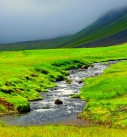
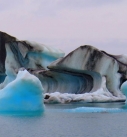











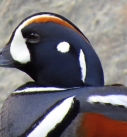


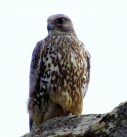

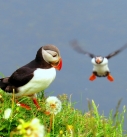



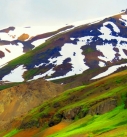
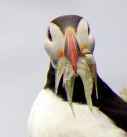



















June 1, 2016
So special and so valuable were these birds held to be in medieval times that flying one was the preserve of kings and they were sometimes given as gifts from one royal house to another. There are even recorded instances of gyrfalcons being demanded as part of the ransom for captured royalty. Most prized of all was the white gyrfalcon and it is one of these that has turned up locally.